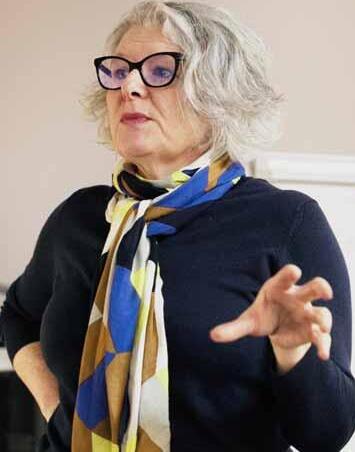
2 minute read
Independent journalism sector has a vital role to play, says chair of community network
Local public interest journalism is a vital part of the social infrastructure and creates social capital which binds community together, Rachel Matthews, chair of the Local and Community Network at MeCCSA (The Media, Communication and Cultural Studies Association), told the symposium in Bristol.
“Local journalism is part of social infrastructure; we want good roads, we want a good transport system, so why should we not want good local journalism that actually reports on the way we live, in the same way that we want to get from a to b on the bus?
Advertisement
“We do know that local journalism is valuable, but I think, for me, that concept is really mudded because of the local newspaper industry.
“The local newspaper industry has said for years that it existed to benefit local communities and would still say that. The ‘Making a Difference, Journalism Matters’, is the annual campaign of the News Media Association, which represents local newspapers. But actually when you look at how those newspapers operate in detail, you know, they say that they benefit communities, often what they mean is they benefit a community that is equivalent to the commercial market for that newspaper, which is why we get the gaps in coverage people are talking about and communities that aren’t served, which many of you are trying to counter by the work you are doing in the independent news sector.
“The problem is, as we’re already said, those newspapers have a big voice and in many ways for many policy people in those high-level discussions, it’s that model of community benefit which kind of dominates their understanding. So, one of things it’s good for us to do, is to suggest different ways to retell that story about the benefit of community news, or what happens in local journalism.”
She said that while many big newspaper offices had closed offices, others in the independent journalism sector, such as Greater Govanhill magazine and The Ferret in Scotland had opened a new community space, where people can meet.

“It’s more than information that matters to people. So, when you think about why people care about local journalism and the organisations who produce local journalism, for me, it’s not just about the information that is being shared, it’s not just about that community thing, it is also about the social role that these organisations serve. I think that increasingly we can see this role of journalism is coming to the fore.”
Dr Matthews who is an academic at Coventry University, said that when the local newspaper closed its doors and was turned into a hotel, it left citizens without an important ‘third space’ in the community.
“There is lots of evidence around the information that local journalism supports, how that benefits people by increasing the financial scrutiny of local authorities and increasing voter turnout, but it is also worth considering the wider social benefits of local journalism in terms of thinking about the provision of third spaces”, she said.
“When you had a newspaper like the Coventry Evening Telegraph in the city, people would have gone to that building for all sorts of reasons.
“They would have rung up when they needed to ask you about something, they would have come to you with stories if things weren’t working right, for example poor housing has been a staple of local journalism for years and years. So, you’re part social service, you’re part open space. When people know the journalists, when they have that daily contact, you’re part of the community, you’re on the street and you’re visible, then you perform a much wider service than just sharing information.”
Dr Matthews said the independent public interest journalism sector must speak the language of policy makers, so they understand the tangible and intangible benefits the sector delivers to support the social infrastructure within communities.



